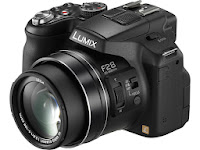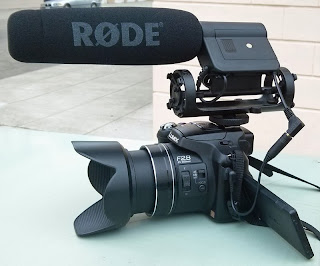Work-Around Windows 8.1 Update Problems
(Error 0xC1900101 - 0x30017)
As predicted here in
Windows 8 Preview, Windows 8 has been a big disappointment, confusing users and contributing to poor sales of Windows personal computers and tablets. Microsoft has attempted to respond to some of complaints with Windows 8.1, a free update, which restores the ability to boot to the familiar desktop and a Start button of sorts, but it failed to address other big issues, and missed opportunities raised here in
Windows 8 Misses the Mark except for better integration of
SkyDrive cloud services.
Still, half a loaf would seem to be better than none, except the update has been problematic for many users. Boot problems from the RT update were well-publicized and are now apparently corrected, but there are also less well-publicized problems with the standard update. Real world case in point (with possible causes and solutions):
 |
| Correct Windows 8.1 update |
Starting point was a relatively current desktop PC with quad core Intel processor and large hard disk running Windows 8 without any apparent problems. Prepared for the 8.1 update with best practices: (a) checked hard disk for errors, (b) ensured backup was current, (3) applied all Windows 8 updates, (4) rebooted system. Opened Store app and encountered
Problem 1: Instead of "Update to Windows 8.1 for free", the offer was Windows 8.1 "Preview", which shouldn't have appeared. Assumed this was just a display issue, and proceeded with install, but differences with a normal update suggest it may have contributed to the later problem (below).
Problem 1 work-around (discovered later): Open Search, run "msreset" (to reset the Store cache), then open Store again. (It boggles the mind that Microsoft would create a utility to do this rather than
fix the system to prevent the problem, but that's Microsoft.)
That started the update process, which is quite lengthy, in part because the update is a huge 3.6 GB, a long download even on a fast Internet connection. Even when the download is complete, the update is still a lengthy process, even on a fast system, as it slowly steps through checks, installs, configuration, etc.
Problem 2:
Finally, well over an hour into the process, it rebooted, but instead of starting Windows 8.1, it started checking the hard disk for errors (despite the disk being error free). After a long process it rebooted, and again started checking the hard disk for errors, repeating the same long process, but after another reboot, it then displayed "Restoring your previous version of windows". So yet another long process, followed by a reboot back into Windows 8, whereupon it reported that Windows 8.1 update had failed due to
error 0xC1900101 - 0x30017 (a singularly unhelpful message, but again, that's Microsoft).
 |
| msconfig |
Searching online failed to turn up anything definitive on the error code, just hints that it might be due to device driver and/or software compatibility problem, notwithstanding all the time taken for "compatibility" checking in the update without any reported issues. (It boggles the mind how there could be such issues in Windows 8.1 that are not in Windows 8, but that's Microsoft.) Suggested
Problem 2 work-arounds:
- Update all devices drivers to versions known to be compatible with Windows 8.1 (link).
- Check all software for compatibility with Windows 8.1 (at vendor and Windows Compatibility Center), and remove any that are incompatible.
- Disable all non-Microsoft services with msconfig (System Configuration) during the 8.1 update. (Click Services tab; check Hide all Microsoft services; then click Disable all.) Reverse process after the 8.1 update.
- Disable all non-essential Startup with Task Manager during the 8.1 update. (Click Startup tab; select all items; then click Disable.) Reverse process after the 8.1 update.
In this particular case, Dragon NaturallySpeaking version 11 was identified as a
possible problem in Step 2, so it has been removed (along with some other non-essential software). Unfortunately, the huge update has to be
downloaded again (why?!), so it will take some time to find out.
UPDATE: The update
did complete successfully with
Problem 1 work-around and
Problem 2 work-around 2. (It was not necessary to use Problem 2 work-around 1, 3, or 4.)
OTHER ISSUES
- Microsoft Account part 1: Initial setup of Windows 8.1 seems to demand an online Microsoft Account. This actually isn't necessary. To use the existing Windows login, click Create New Account, then Cancel, and log into Local Account. (For more information see Quick Tip: Change to a local account in Windows 8.1. Microsoft should make this easier and clearer.)
- Microsoft Account part 2: Some apps in the Store ask you to login to a Microsoft Account. This is actually only necessary for paid apps.
- Default printer was changed by the update from the Epson printer installed on the computer to Microsoft XPS Document Writer. It was simple enough to change back, but this should not have happened.
 Micro Tripod
Micro Tripod













